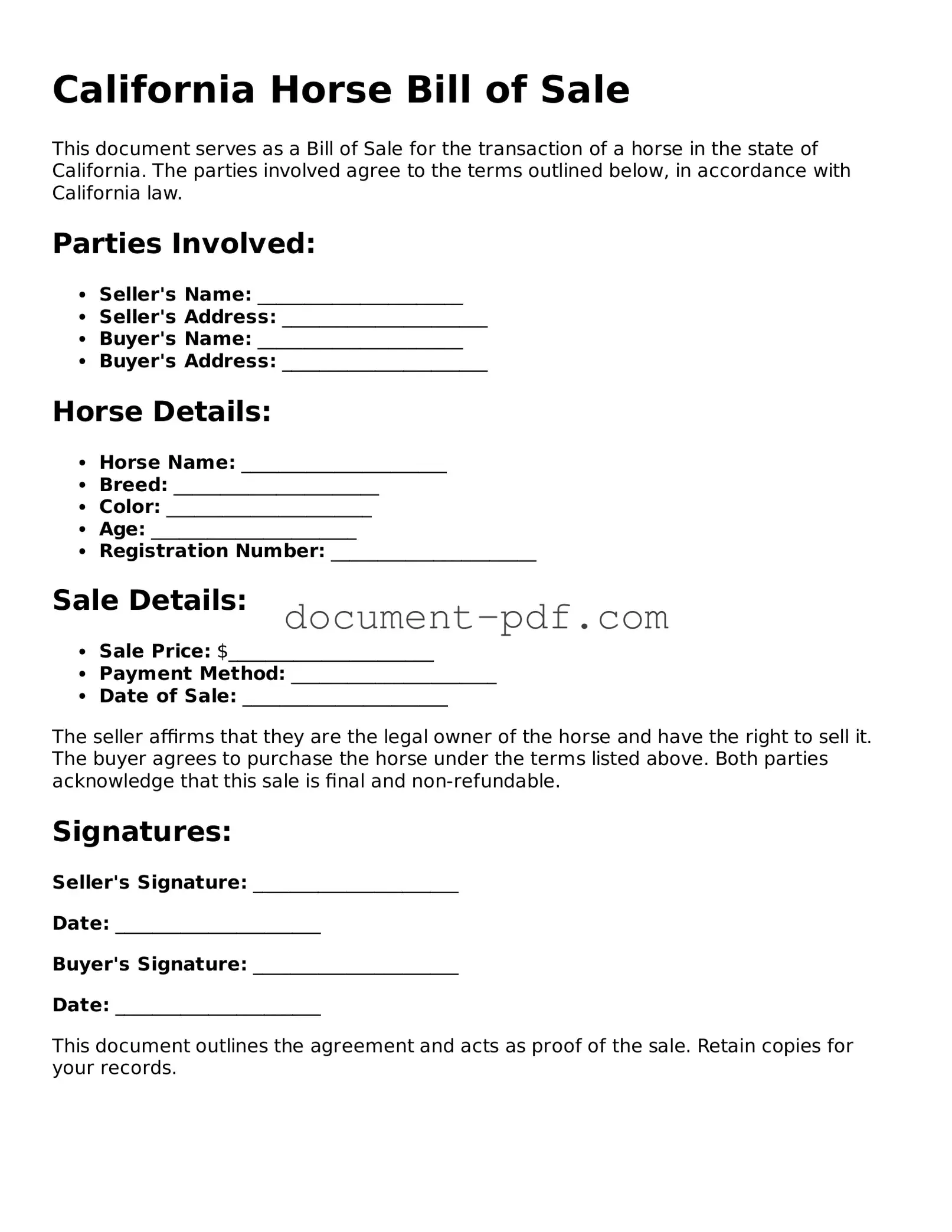The California Vehicle Bill of Sale serves a similar purpose as the Horse Bill of Sale. Both documents facilitate the transfer of ownership from one party to another. In the case of a vehicle, the seller provides details about the car, including its make, model, and Vehicle Identification Number (VIN). The buyer's information is also recorded, ensuring a clear record of the transaction. Just like the Horse Bill of Sale, it often requires signatures from both parties to validate the agreement.
The Boat Bill of Sale is another document akin to the Horse Bill of Sale. This form is used when ownership of a boat changes hands. It includes essential details such as the boat's make, model, and hull identification number. Similar to the Horse Bill of Sale, it protects both the buyer and seller by documenting the sale, thereby providing proof of ownership and the terms agreed upon during the transaction.
For those considering their future planning, understanding a Durable Power of Attorney form guide can provide essential insights into how these documents function and their importance in managing financial and health-related decisions.
A Pet Bill of Sale is comparable to the Horse Bill of Sale in that it involves the transfer of ownership of an animal. This document includes information about the pet, such as breed, age, and health status. Like the Horse Bill of Sale, it ensures that both parties understand the terms of the sale and provides a record that can be referenced in case of disputes or questions regarding ownership.
The Livestock Bill of Sale serves a similar function for farm animals, including cattle and sheep. This document details the livestock being sold, including identification numbers and health certifications. Both this and the Horse Bill of Sale are essential for legal ownership transfer and help establish the buyer's rights to the animal after the sale is completed.
The Mobile Home Bill of Sale is similar in that it involves the transfer of ownership of a significant asset. This document includes details such as the mobile home’s make, model, and identification number. Just like the Horse Bill of Sale, it provides a written record of the transaction, which is crucial for legal purposes and future ownership verification.
The Firearm Bill of Sale shares similarities with the Horse Bill of Sale in terms of ownership transfer documentation. This form records the sale of a firearm, including details about the gun, such as make, model, and serial number. Both documents require the signatures of both parties, ensuring that the transaction is legally binding and that the new owner has clear rights to the item.
The Real Estate Purchase Agreement, while more complex, serves a similar purpose in terms of transferring ownership. This document outlines the sale of a property, including the terms and conditions agreed upon by both parties. Like the Horse Bill of Sale, it provides a legal framework for the transaction, ensuring that both the buyer and seller are protected and that all necessary information is documented.
The Business Bill of Sale is comparable as it records the sale of a business or its assets. This document details the assets being sold, including inventory, equipment, and customer lists. Both this and the Horse Bill of Sale serve to formalize the transfer of ownership and ensure that all parties are aware of their rights and responsibilities following the sale.
Finally, the Franchise Agreement shares similarities with the Horse Bill of Sale in that it outlines the terms under which a franchise is sold. This document specifies the rights and obligations of both the franchisor and franchisee. Like the Horse Bill of Sale, it serves as a formal record of the transaction, ensuring that both parties understand their commitments and the terms of ownership transfer.
